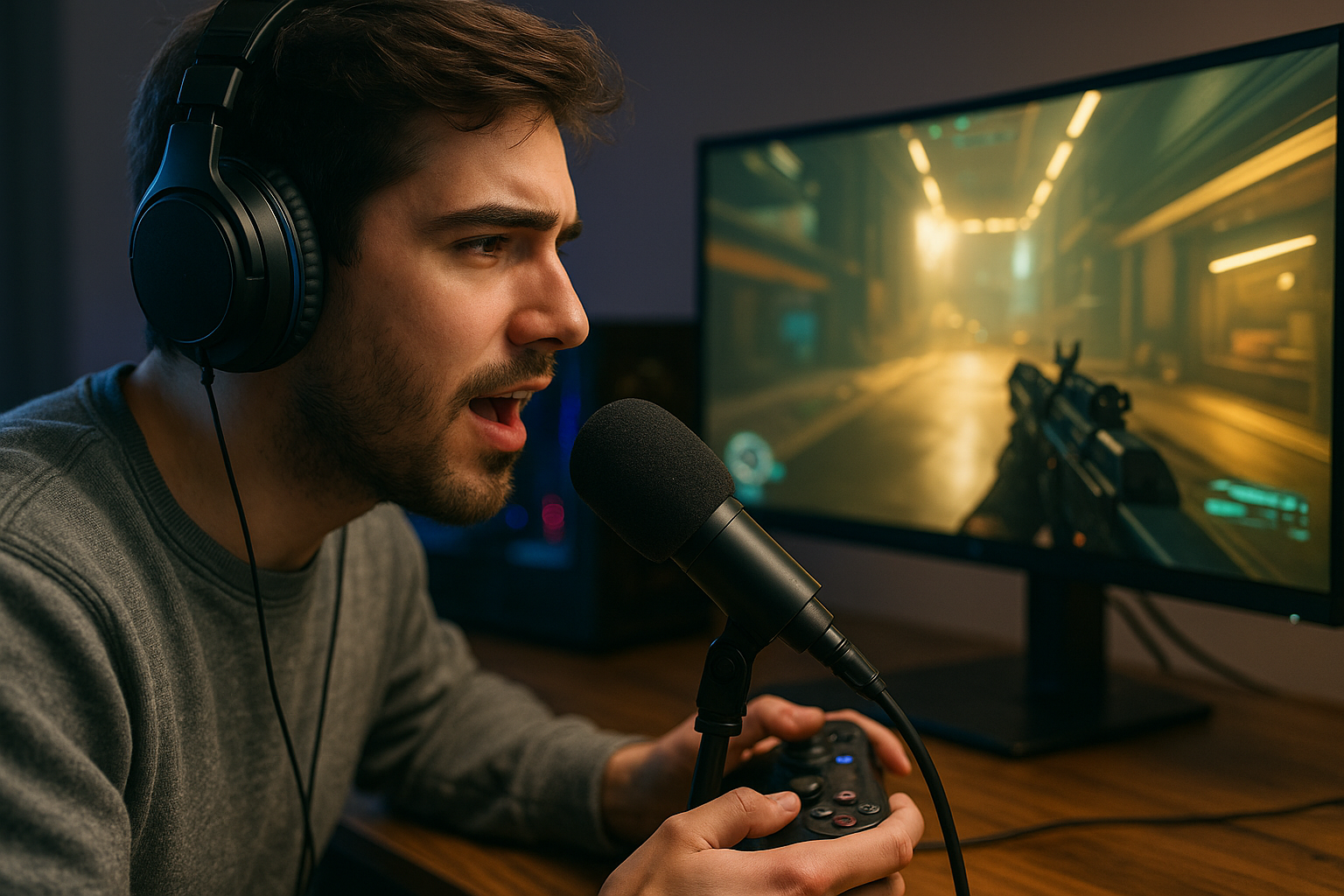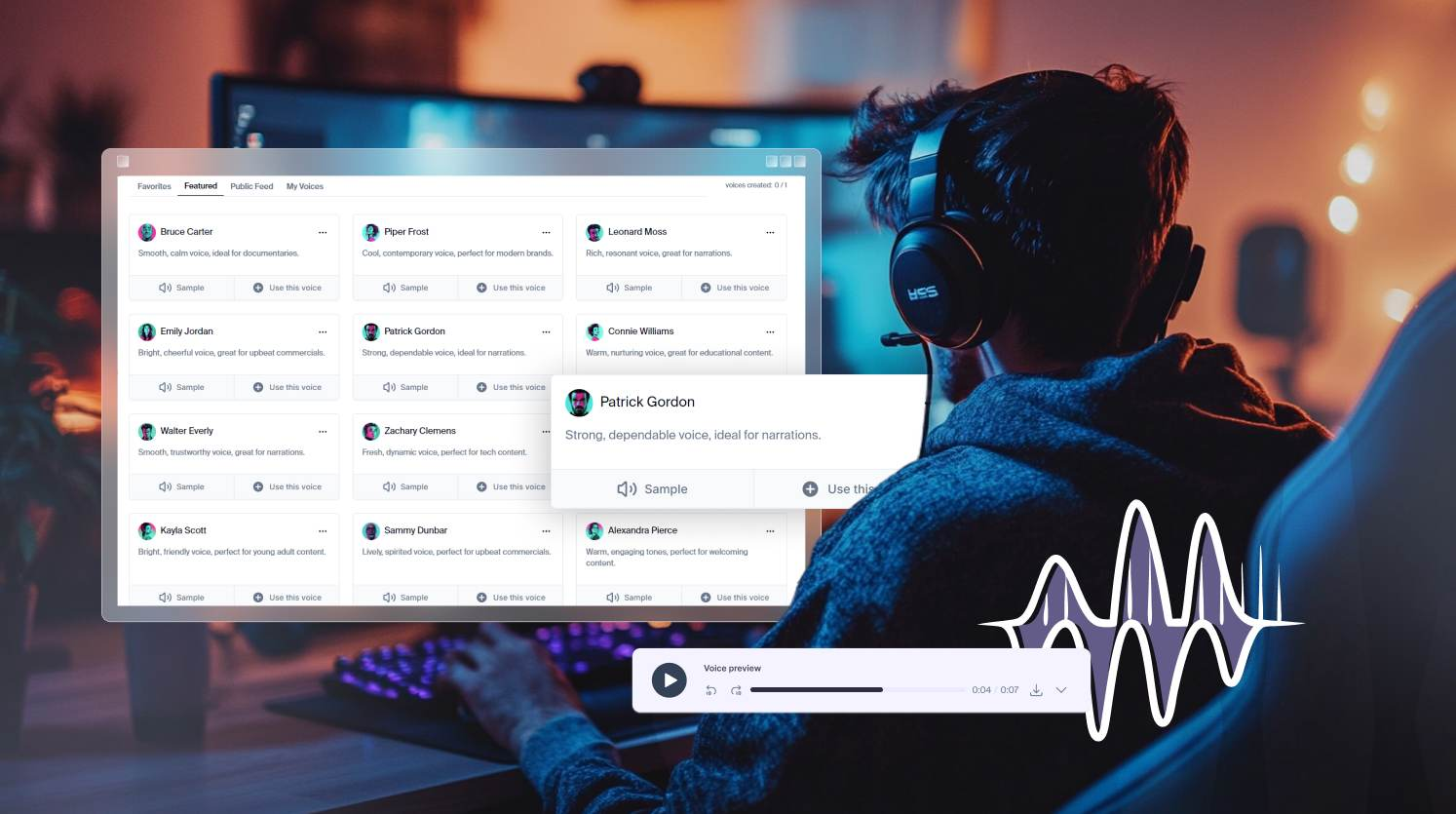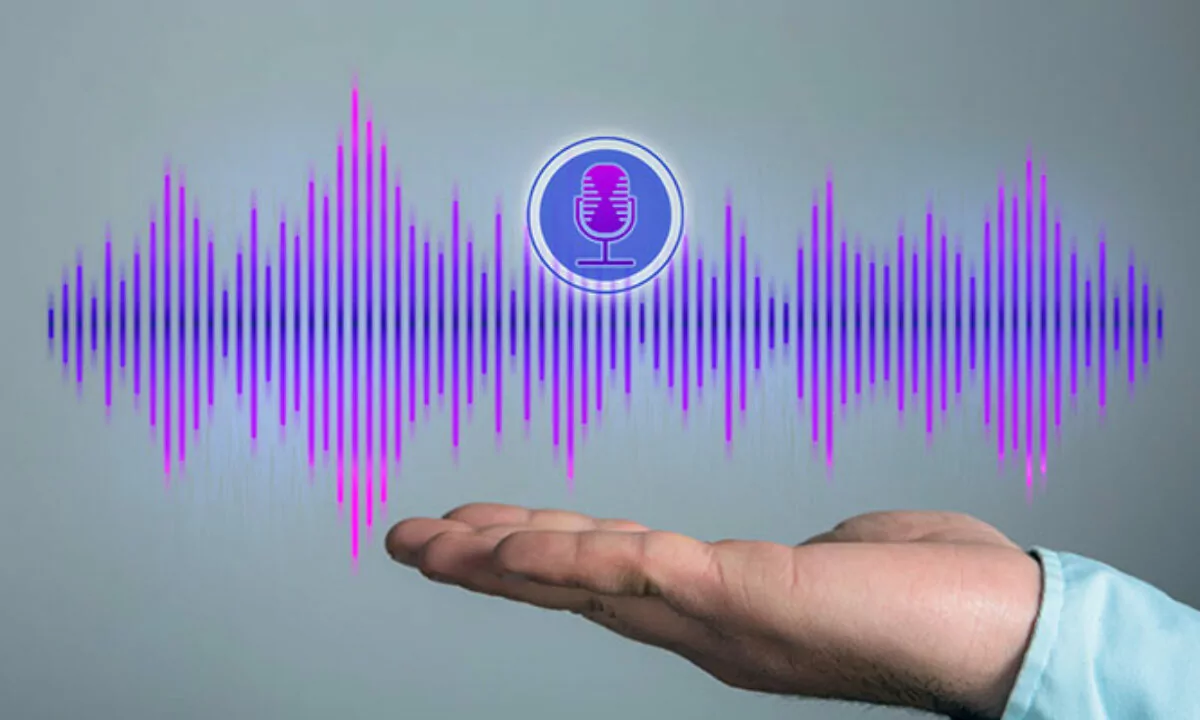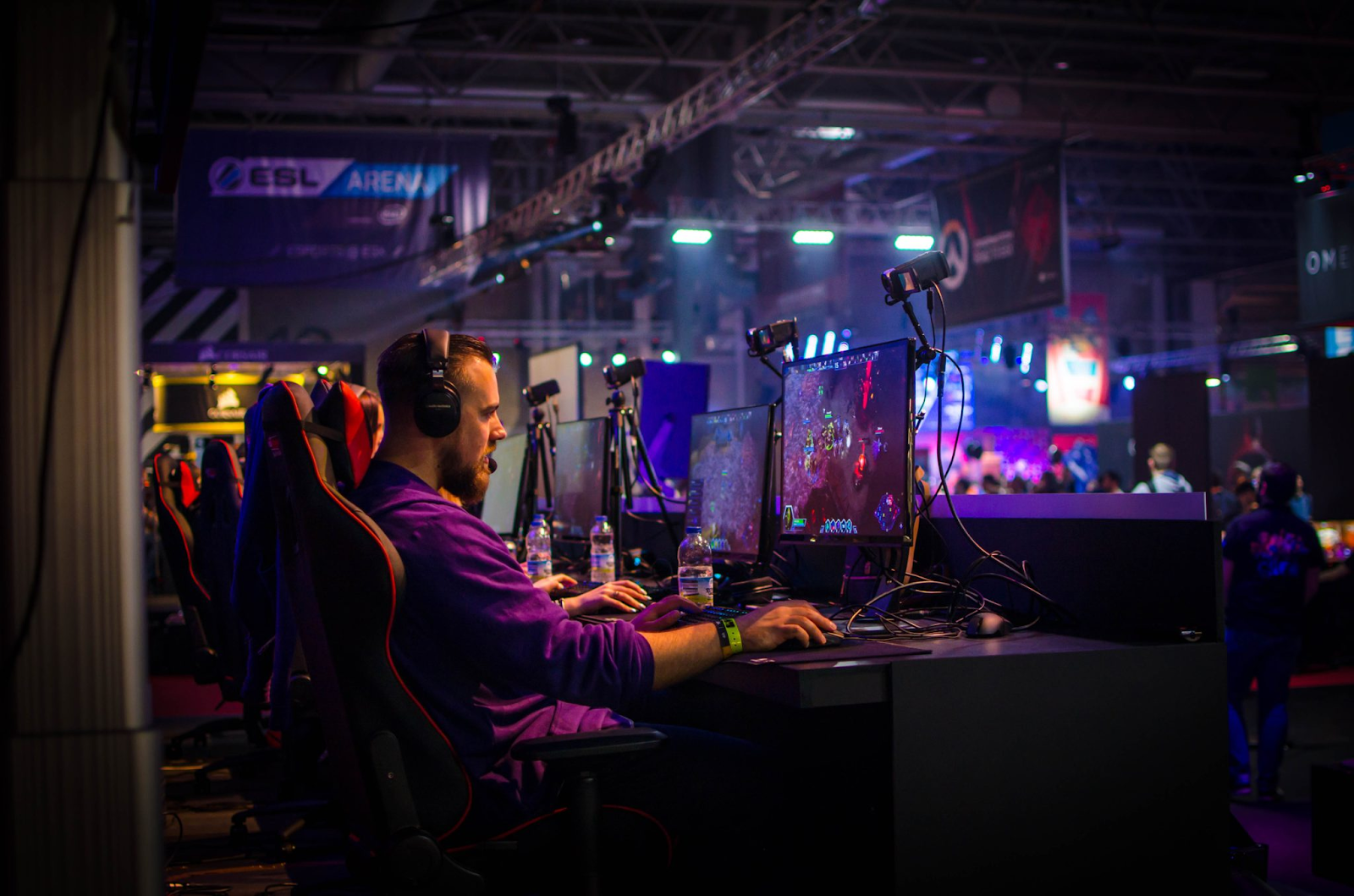Speech to text voice technology is now a major innovation in interactive entertainment. In gaming it improves communication, expands accessibility, and opens new design options for developers. The global gaming market passed more than 200 billion in 2023, and voice features are quickly becoming standard.
The impact goes beyond convenience. It removes barriers for players with hearing or mobility challenges. The World Health Organization reports that over 430 million people worldwide live with disabling hearing loss. For them, accessible tools in gaming are essential, not optional. They are part of a larger movement toward digital inclusion.

Communication without slowing down
In multiplayer gaming communication speed is critical. Every second matters in shooters, strategy titles, and eSports. Typing during play slows players and can cost matches. Speech to text replaces manual typing with instant transcription. A command spoken into the microphone becomes visible text for teammates within a fraction of a second.
This approach also solves the problem of noisy rooms or poor audio channels. Instead of unclear voice chat, speech transcription gives clear written output. Research on auditory processing shows that reduced background noise improves performance and focus in high stress conditions.
The value is not only technical. It allows inclusivity. Players who cannot or do not want to use live voice chat due to privacy concerns, anxiety, or noisy environments can stay fully engaged. Silent transcription modes make strategy sharing possible without audible exposure. This balance of accessibility and discretion is one reason why competitive teams are starting to use text transcription during tournaments.
Accessibility beyond controllers
Accessibility is not an afterthought anymore. Games are expected to provide tools for players who face mobility or sensory challenges. Speech to text voice systems allow control of characters and menus without a keyboard or a controller. This can transform the experience for players with conditions like muscular dystrophy, arthritis, or spinal cord injuries.
For hearing impaired players the benefit is different but equally important. Speech transcription converts spoken chat into readable text. This keeps communication equal and prevents exclusion during team play. Clinical research shows that inclusive communication tools reduce social isolation and improve outcomes in digital communities.
Here are three key benefits of accessibility through voice systems:
- Hands free gameplay where commands replace manual input
- Real time text chat for players with hearing impairments
- Voice guided navigation that simplifies complex menus
This aligns with findings in NCBI reports that stress the role of adaptive technologies in reducing digital barriers. The lessons from medical technology directly support progress in gaming.

Innovation and experiments
Hackathons and research projects provide a glimpse of the next stage. One project used only voice to control a boxing game. Players spoke commands like punch or block and the character responded instantly. This type of experiment shows how alternative input methods can create unique gameplay.
Developers do not need to start from zero. Tools already exist that provide accurate recognition. For example, the Graphlogic Speech to Text API supports multi language transcription and can be integrated into games. This saves resources and shortens development cycles.
Experiments also include VR and AR settings. Here voice navigation solves the problem of controller complexity. In immersive environments where the player wears a headset, speaking commands feels natural and avoids interruptions. Combined with adaptive AI, these features can make gameplay more intuitive.

Competitive gaming and its demands
Competitive gaming or eSports creates unique pressures. Teams rely on precise coordination and communication. Voice chat is fast but not always clear. Speech to text adds a second layer of clarity by turning spoken messages into instant written commands.
This also solves multilingual issues. International teams may speak different languages. With speech to text, translation and transcription help them coordinate more effectively. During global events this can make the difference between victory and defeat.
Tournaments also show another benefit. Silent communication keeps strategies private. Instead of broadcasting commands audibly to nearby opponents, players can share messages through instant text. Less background noise creates better focus and reduces misunderstandings.
Still, accuracy challenges remain. Error rates in noisy environments can reach 15% according to industry estimates. Accents, slang, and gaming jargon can reduce reliability. This is a barrier for professional use where precision is critical.
Here is a fully expanded version of those four sections, written in the same style as the rest of your article. Each idea is developed to roughly double the depth and length.

Where the limits are
Despite visible progress in speech to text, adoption across the gaming industry is still far from universal. The roadblocks are significant and affect both developers and players. There are three primary challenges that continue to slow development and broader implementation.
Accuracy problems remain the most pressing issue. Voice recognition engines struggle with accents, regional dialects, slang, and the specialized jargon that is common in competitive games. In practice, this means a simple command can be misinterpreted or missed entirely. For example, a player from France issuing an English command may experience frequent transcription errors. Background noise adds another obstacle. Explosions, crowd sounds in live tournaments, and music within the game environment can reduce recognition reliability even further. The result is frustration for players who expect smooth communication but instead face miscommunication at critical moments.
Privacy concerns are another major barrier. Players increasingly question how their voice data is captured, stored, and shared. Voice input often contains sensitive personal information, and without transparency, users may feel exposed. Worries about unauthorized access or commercial misuse of recordings discourage adoption. Trust remains low when companies fail to clearly explain their data policies or rely on vague statements. In a time when regulations such as GDPR and CCPA set strict requirements, the lack of strong guarantees can quickly turn into reputational risk. Developers must provide explicit commitments about encryption, storage, and deletion policies to win over skeptical audiences.

Technical complexity also slows integration. Real time transcription requires not only high accuracy but also very low latency. Even a short delay can disrupt competitive play or reduce immersion in story driven games. Achieving reliable performance across PCs, consoles, mobile devices, and cloud platforms is a heavy engineering task. It requires optimization for different hardware capacities, testing in diverse conditions, and constant updates to ensure stability. Costs for implementation and maintenance can rise quickly, especially for smaller studios. Without robust toolkits and APIs, many developers simply avoid adding speech systems, fearing they will compromise performance.
These problems are not minor details. They directly affect whether players trust and enjoy the feature. Until accuracy is consistent, privacy is guaranteed, and integration is seamless, adoption will remain uneven. Building clear solutions in each of these areas is essential for turning speech to text from a niche option into a mainstream standard.
What to expect next
Artificial intelligence is already driving measurable improvements in speech to text performance. Recent advances have raised transcription accuracy by more than 15% compared with earlier systems. This progress reduces errors with accents and slang, leading to smoother interaction in noisy conditions. As deep learning models evolve further, error rates are expected to keep declining.
Future growth will focus on several promising areas. The first is voice commands in VR and AR, where traditional controls are often impractical. In virtual environments, speaking a command like open map or change weapon feels more natural than navigating with buttons. For players with mobility challenges, it can make the difference between being able to play and being excluded.
Another important development is personalized in game voice assistants. These AI powered helpers will not only execute commands but also provide real time support. For example, during a complex battle, the assistant could suggest tactical moves or remind a player of cooldown times. This level of adaptation will make games more responsive and engaging.

The third growth area is cross platform integration. Today, most voice systems are tied to specific devices. Future solutions will span PC, console, mobile, and cloud gaming, ensuring that players have consistent experiences wherever they play. Cloud based processing will help offload heavy tasks, allowing even low powered devices to support accurate speech recognition.
For developers, APIs remain the most practical entry point. Ready made solutions such as the Graphlogic Generative AI and Conversational Platform offer advanced models with adaptive dialogue systems and multi language support. This allows studios to focus on game design while relying on trusted services for technical performance. As APIs continue to improve, barriers to adoption will shrink, opening the door to broader and more creative uses of voice technology.
Trends and forecasts
Several trends now point to an even wider role of speech to text in gaming, reflecting both technological progress and social expectations.
- Integration with health data is one emerging frontier. Voice input can be analyzed to detect stress levels, fatigue, or emotional states. Games may use this information to adjust difficulty in real time, creating adaptive experiences that respond to player well being. Such applications mirror methods already used in medical monitoring and could extend into entertainment.
- Growth in VR adoption further strengthens the case. Analysts project the VR gaming market to surpass $50 billion by 2027. In these immersive environments, speech to text will be indispensable. Controllers are often bulky, and removing a headset to navigate menus breaks immersion. Voice commands keep the flow intact and will likely become a default expectation.
- Expansion in educational gaming represents another important trend. Speech recognition makes learning games more interactive by encouraging spoken responses, language practice, and real time feedback. Schools and training programs are beginning to adopt these tools to support diverse learners. The overlap between education and entertainment will drive investment in accessible voice systems.
- Regulation pressure will also shape adoption speed. Laws such as GDPR in Europe and CCPA in California demand strict control over personal data. Companies that handle voice inputs will need to ensure compliance or face penalties. This will push developers toward safer, more transparent practices, which in turn may increase user trust.
- Rising accessibility standards are perhaps the clearest trend. Subtitles are now mandatory in many regions, and voice transcription could follow a similar path. Industry wide guidelines may eventually require games to include basic accessibility features, making speech to text a standard compliance measure rather than an optional extra.

Developers who anticipate these shifts will be better positioned to capture broad audiences. By preparing now for higher accessibility demands, stricter privacy rules, and the expansion of VR and educational markets, studios can secure both market share and long term relevance.
Practical advice for developers
For teams considering integration, several best practices can make the difference between success and failure.
- Test with diverse user groups. Players speak with many accents, dialects, and personal styles. Testing broadly ensures that the system performs reliably across a real world audience.
- Prioritize low latency. Even small delays can break immersion or undermine competitive play. Aim for near instant feedback to keep gameplay smooth.
- Offer strong privacy settings. Let players control how their voice data is stored, whether it is kept locally or transmitted to servers, and for how long it remains accessible.
- Support both voice and text modes. Not every player prefers or can use voice. A hybrid approach ensures inclusivity and prevents exclusion.
- Track error rates closely. Monitor how the system performs in practice and update models regularly. Gaming slang evolves quickly, and recognition engines must adapt to stay relevant.
Adoption is more than a technical task. It is about building trust, ensuring equal access, and showing players that their safety and experience matter. Developers who follow these principles will be more likely to succeed and to create games that appeal to both mainstream and underserved communities.
From Experiment to Essential in Gaming
Speech to text voice technology is no longer a side experiment in gaming. It is steadily becoming a core system that enhances communication, ensures accessibility, and allows entirely new ways to play. For millions of players with disabilities it represents not just convenience but the ability to fully participate in digital worlds. For competitive teams it delivers speed and clarity. For developers it offers creative freedom to design new mechanics that were not possible before.
The challenges are real. Accuracy still suffers with accents, slang, and noisy environments. Privacy concerns remain a major barrier, as players expect transparency and security around their voice data. Technical integration requires significant resources to guarantee low latency and reliability. These factors slow adoption but do not diminish the long term value.
Future developments in AI are already improving transcription accuracy by more than 15%. Cross platform integration will extend voice technology into VR, AR, and cloud gaming, ensuring consistent experiences across devices. Personalized in game assistants will likely become common, providing adaptive support during complex scenarios. These trends point to a future where speech to text will be as expected as subtitles or controller vibration.
The message for developers is clear. Early adoption can position studios as leaders in accessibility and innovation. Investing in reliable APIs and testing with diverse player groups will help overcome limitations. Those who prioritize inclusion will reach larger and more engaged audiences.
The gaming industry has always been a proving ground for emerging technologies. Just as 3D graphics, online play, and motion sensors defined earlier generations, voice recognition and transcription now stand at the center of progress. With sustained effort, speech to text will shift from a useful option to an essential part of design philosophy, shaping the future of gaming for all players.
FAQ
It improves team communication, increases accessibility for players with disabilities, and creates new gameplay opportunities such as voice only controls.
Accuracy has improved significantly with AI models, but challenges remain with accents, slang, and noisy environments. Error rates can still reach 15% in difficult conditions.
Yes. Players often worry about how their voice data is collected and stored. Developers need transparent policies and strong encryption to build trust.
Yes. It converts spoken chat into text in real time, which allows hearing impaired gamers to fully participate in multiplayer conversations.
Not entirely. Voice commands will complement rather than replace controllers. They are especially useful in VR, AR, and for accessibility but not always practical for every genre.
Leading providers include Google, Microsoft, and specialized platforms like Graphlogic which offer APIs tailored to speech to text integration in gaming.

